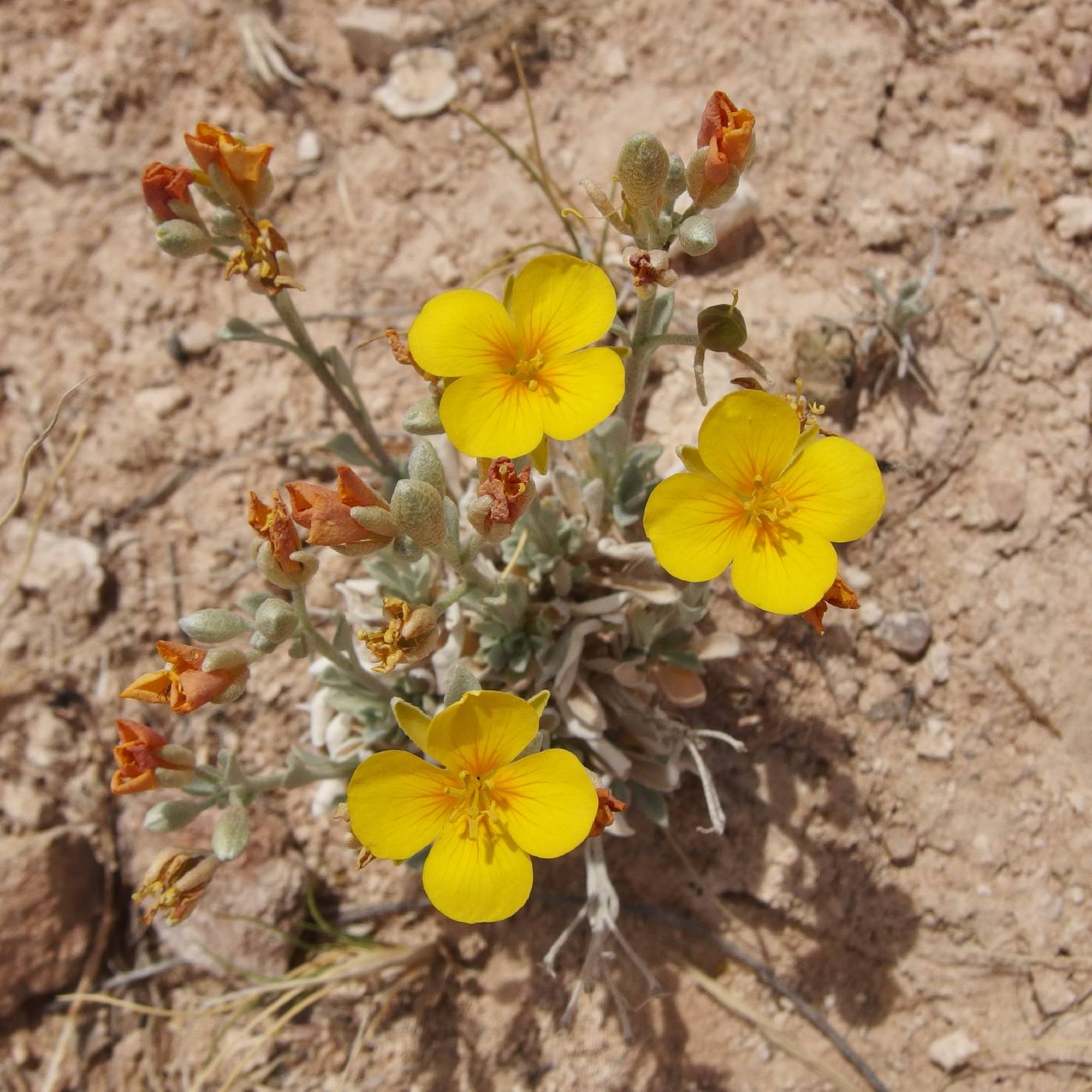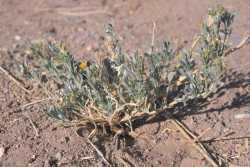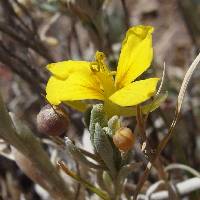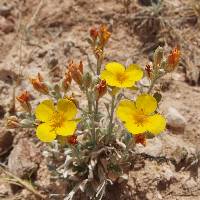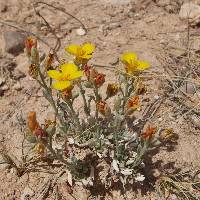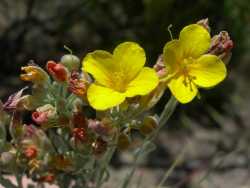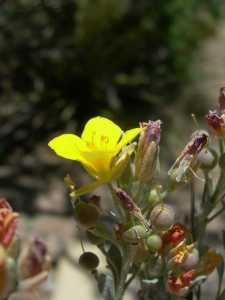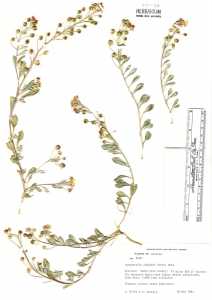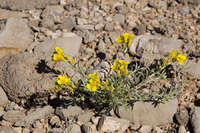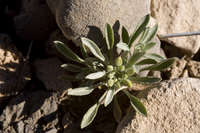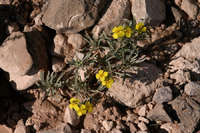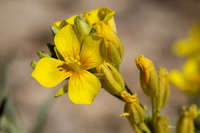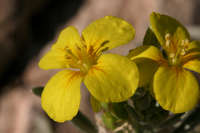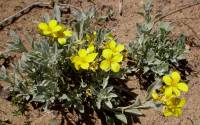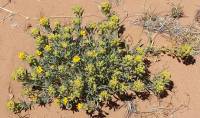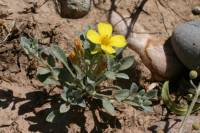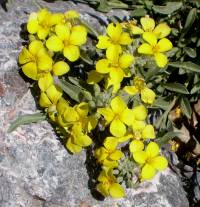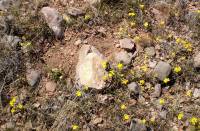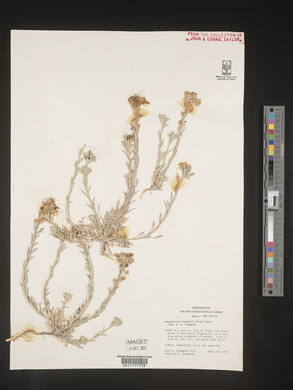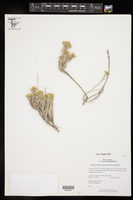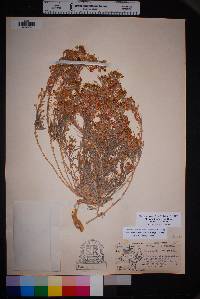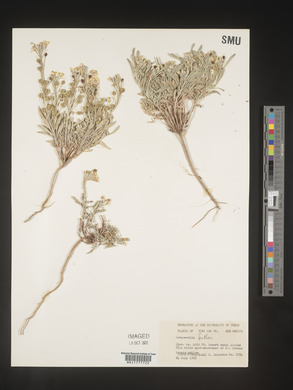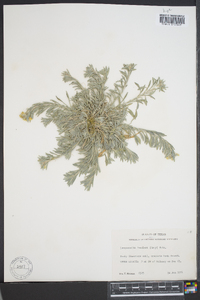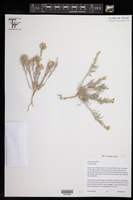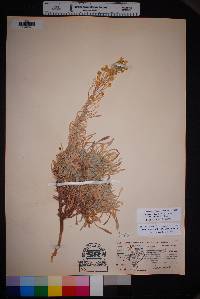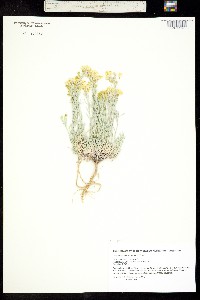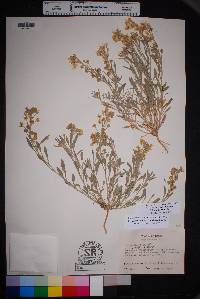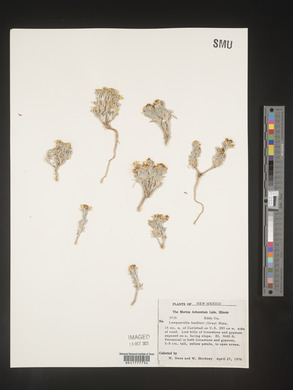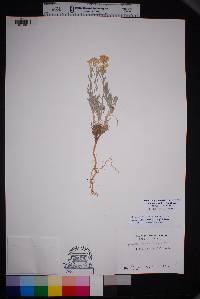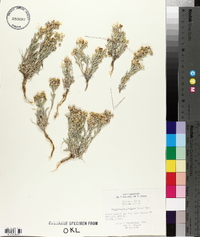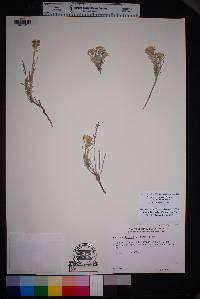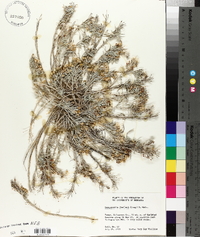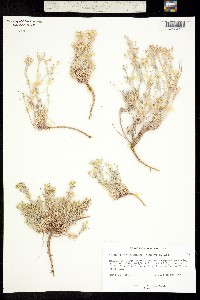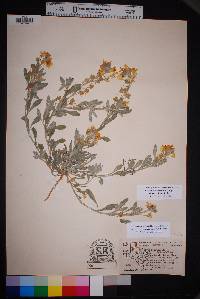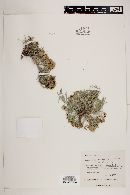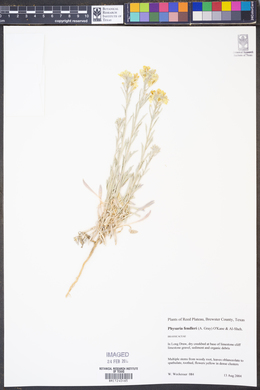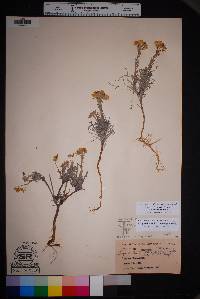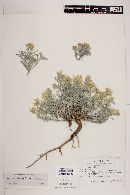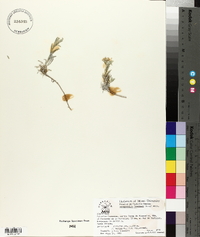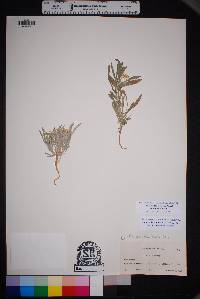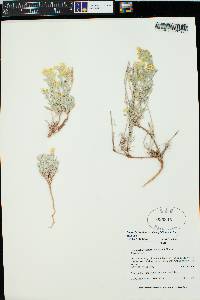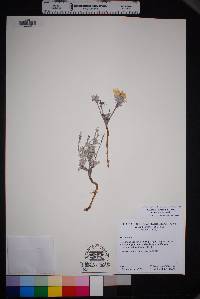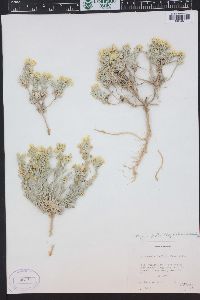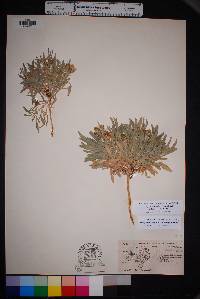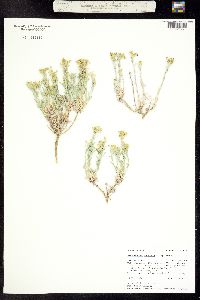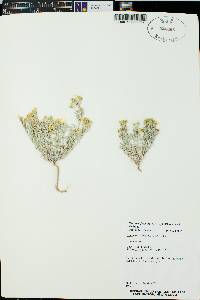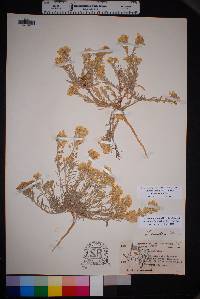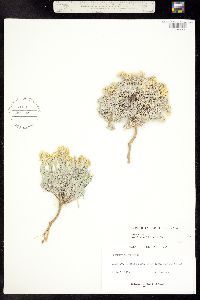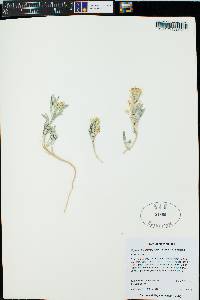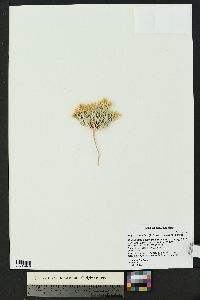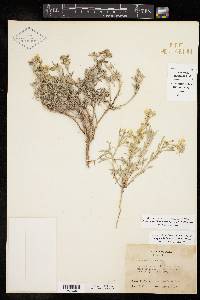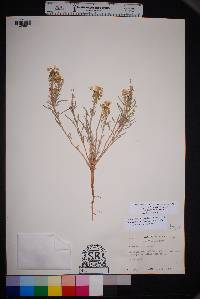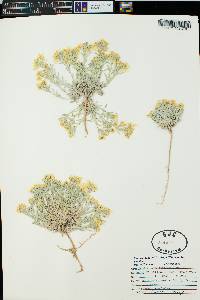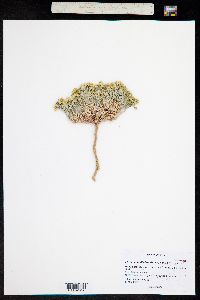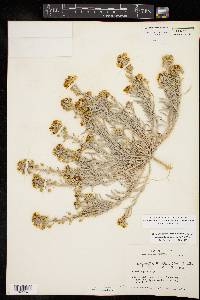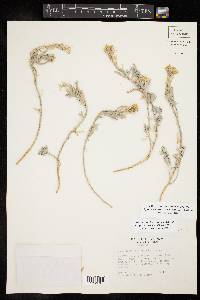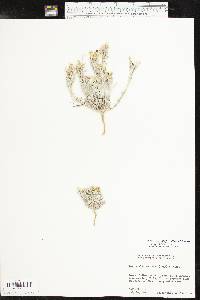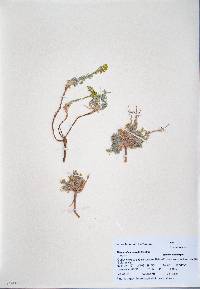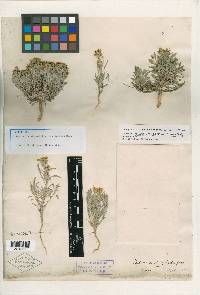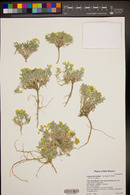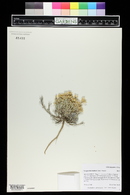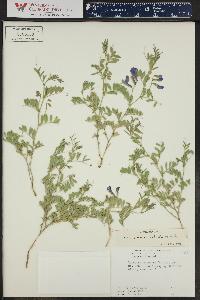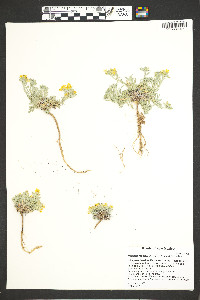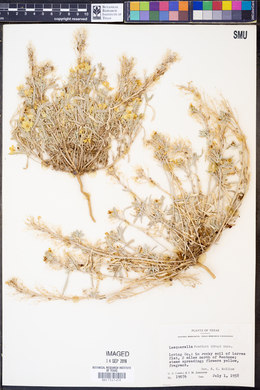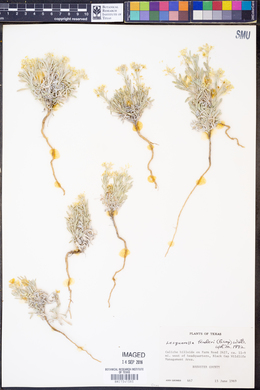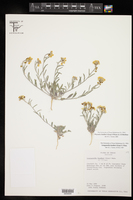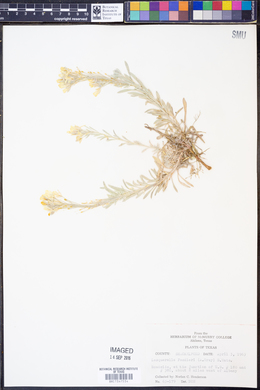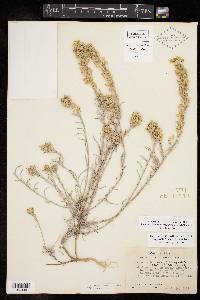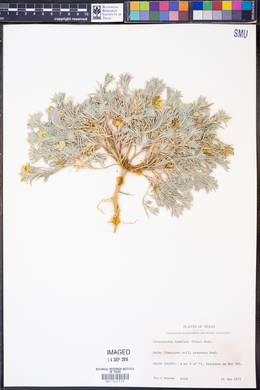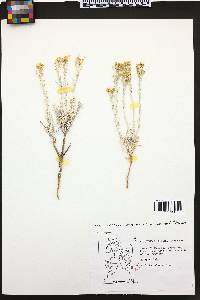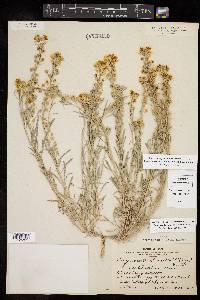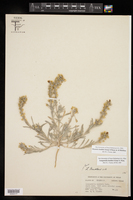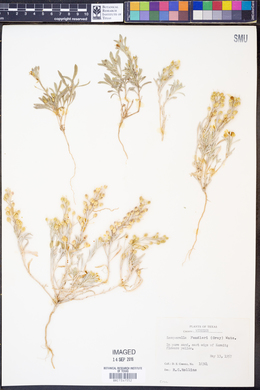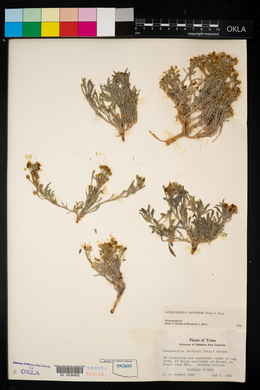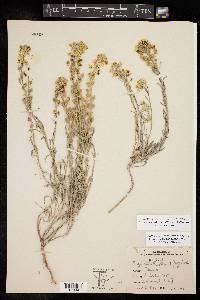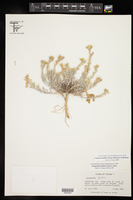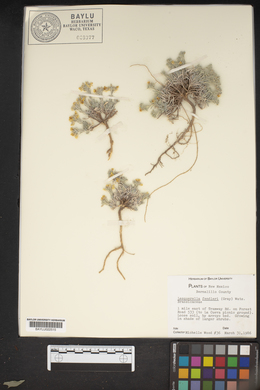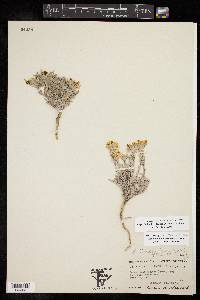
|
|
|
|
Family: Brassicaceae
Fendler's bladderpod, more...Fendler's Bladderpod, Fendler bladderpod
[Lesquerella fendleri (A. Gray) S. Wats., moreLesquerella foliacea Greene, Lesquerella praecox Woot. & Standl., Lesquerella stenophylla Rydb., Vesicaria fendleri A. Gray, Vesicaria stenophylla A.Gray, Vesicaria stenophylla var. humilis A.Gray, Vesicaria stenophylla var. procera A.Gray] |
Perennials; caudex branched, (sometimes woody at base); densely (silvery) pubescent, trichomes (sessile or short-stalked), several-rayed, rays not furcate, fused (webbed) ca. 1/2 their length, (tuberculate throughout or tubercles scarce or absent over center). Stems several from base, erect or laterally decumbent, (usually unbranched), (0.3-)0.5-2.5(-4) dm. Basal leaves: blade linear to somewhat elliptic, 1-4(-8) cm, margins entire or coarsely dentate. Cauline leaves (shortly petiolate); blade usually linear to narrowly oblanceolate, rarely elliptic to rhombic, 0.5-2.5 cm, (base narrowing to petiole), margins entire or remotely dentate (sometimes involute). Racemes loose to somewhat dense. Fruiting pedicels (divaricate-spreading to erect, usually straight or slightly curved, occasionally sigmoid), 8-20(-40) mm. Flowers: sepals elliptic to oblong, 5-8 mm, (lateral pair not saccate, median pair often thickened apically, ± cucullate); petals (usually orange or orange-yellow at junction of blade and claw, sometimes also with orange guidelines), obdeltate to obovate, 8-12 mm, (claw relatively short). Fruits globose, broadly ellipsoid, or ovoid, not or slightly inflated, 5-8 mm, (firm, apex usually acute); valves (not retaining seeds after dehiscence, often reddish in age), glabrous throughout; replum as wide as or wider than fruit; ovules (12-) 20-32(-40) per ovary; style (2-)3-6 mm. Seeds flattened. 2n = 12, 14, 24. Flowering Mar-May. Limestone outcrops, gypseous hills, gravels, sandy washes, rocky slopes, bluffs, shallow drainage areas, plains and desert shrub areas; 100-2000 m; Ariz., Colo., Kans., N.Mex., Okla., Tex., Utah; Mexico (Chihuahua, Coahuila, Nuevo León). In dry areas, Physaria fendleri may flower following suitable rains at any time of the year.
FNA 2010, Kearney and Peebles 1969, McDougall 1973, Heil et al. 2013 Duration: Perennial Nativity: Native Lifeform: Forb/Herb General: Perennial herbs, 5- 40 cm tall, from a usually branched caudex; stems several, each usually unbranched, erect or the lateral stems decumbent; herbage densely and silvery pubescent with sessile or short-stalked stellate hairs; plants with pungent, watery sap. Leaves: Basal leaves emerging from the caudex, not in a rosette formation, sometimes absent; stem leaves alternate, often congested, especially near bases of stems; blades linear or more commonly oblanceolate, 1-8 cm long, with entire margins. Flowers: Yellow to orange and showy, in terminal racemes; pedicels erect-ascending in flower and erect to spreading when in fruit, nearly straight or occasionally s-shaped; sepals 4, elliptic to oblong, 5-8 mm long; petals 4 in a cross formation, oblanceolate, 8-12 mm long, yellow, often with darker orangish veins. Fruits: Capsules globose to ovoid, 5-8 mm long, with a slightly pointed tip where a persistent style attaches, firm and not or slightly inflated, glabrous, often turining reddish with age; seeds 2 mm long, flattened. Ecology: Found on limestone outcrops, gypseous hills, gravels, washes, rocky slopes, bluffs, plains and mesas, below 7,500 ft (2286 m); flowers April-June. Distribution: AZ, CO, KS, NM, OK, TX, UT; MEX. Notes: Physaria species (until recently classified as Lesquerella) have gray-green leaves, often with stellate hairs, white or yellow 4-petaled flowers, and round, globe-shaped fruits with a persistent style attached to the tip. L. fendleri is a perennial from a slightly woody underground or soil-surface branched stem (branched caudex) with dense layers of stellate hairs (use your hand lens); linear to elliptic gray-green leaves; showy yellow flowers; fruiting pedicles nearly straight and not s-shaped; and firm hairless fruits. Depending on soil conditions, this species can be well developed with multiple leafy stems almost half a meter tall, or on rocky windswept mesa rims it can take on a dwarf, mat-like form, with a dense cluster of basal leaves and only a couple of small, 2-3 cm tall, flower stalks. One of the important key couplets in the Lesquerella group has to do with whether or not the rays of the stellate hairs are fused to each other. L. fendleri leaves have stellate hairs with at least 12 rays, and the rays are fused to the middle or more, with webbing between the rays. This can be difficult to see without a dissecting scope, so try to collect as much of the plant as possible for proper determination. Ethnobotany: Unknown, but other species in the genus have uses. Synonyms: Lesquerella fendleri, Lesquerella foliacea, Linnaeus praecox, Vesicaria fendleri Editor: LCrumbacher2012, FSCoburn 2015, AHazelton 2017 Etymology: Physaria comes from the Greek phusa or physa, "bellows" because of the inflated pod, and fendleri is named for August(us) Fendler (1813-1883), a German plant collector in North and Central America. Plant: Short-lived perennial forb, much-branched, usually less than 15 cm; herbage stellate-canescent Leaves: leaves alternate, crowded, lance-ovate, <2cm excluding petiole Flowers: flowers yellow, in crowded racemes Fruit: pod inflated, orbicular, 2-3 mm across, style persistent, pedicel elongate in fruit. |
|
|
|
This project was made possible in part by the Institute of Museum and Library Services [MG-70-19-0057-19].
Powered by Symbiota

